What Cycling Time Trial Helmets Tell Us About the Future of Endurance Sport Gear
Apart from a clear statement that the most aerodynamic gear is also the most goofy
Growing up playing hockey in New England, the pre-game saying was always “look good, feel good, play good.” Not the best phrase grammatically, but it was a sentiment also echoed in collegiate rowing where you’re always looking to add to your style with a new pair of Oakleys or a bucket hat to “find some free speed.” In modern professional cycling, the most analogous phrase seems to now be “The closer we look to Dune characters who just stepped off a ship, the faster we should be on our time trial bikes.”
And! We now have a new reigning champion in this pursuit for speed: Team Visma Lease-a-Bike (“Visma LAB”), who recently debuted one of the most outrageous time trial helmets of all time. The first time I saw a photo of it, I thought it was photoshopped, and I promise I have not doctored this image of it in any way:
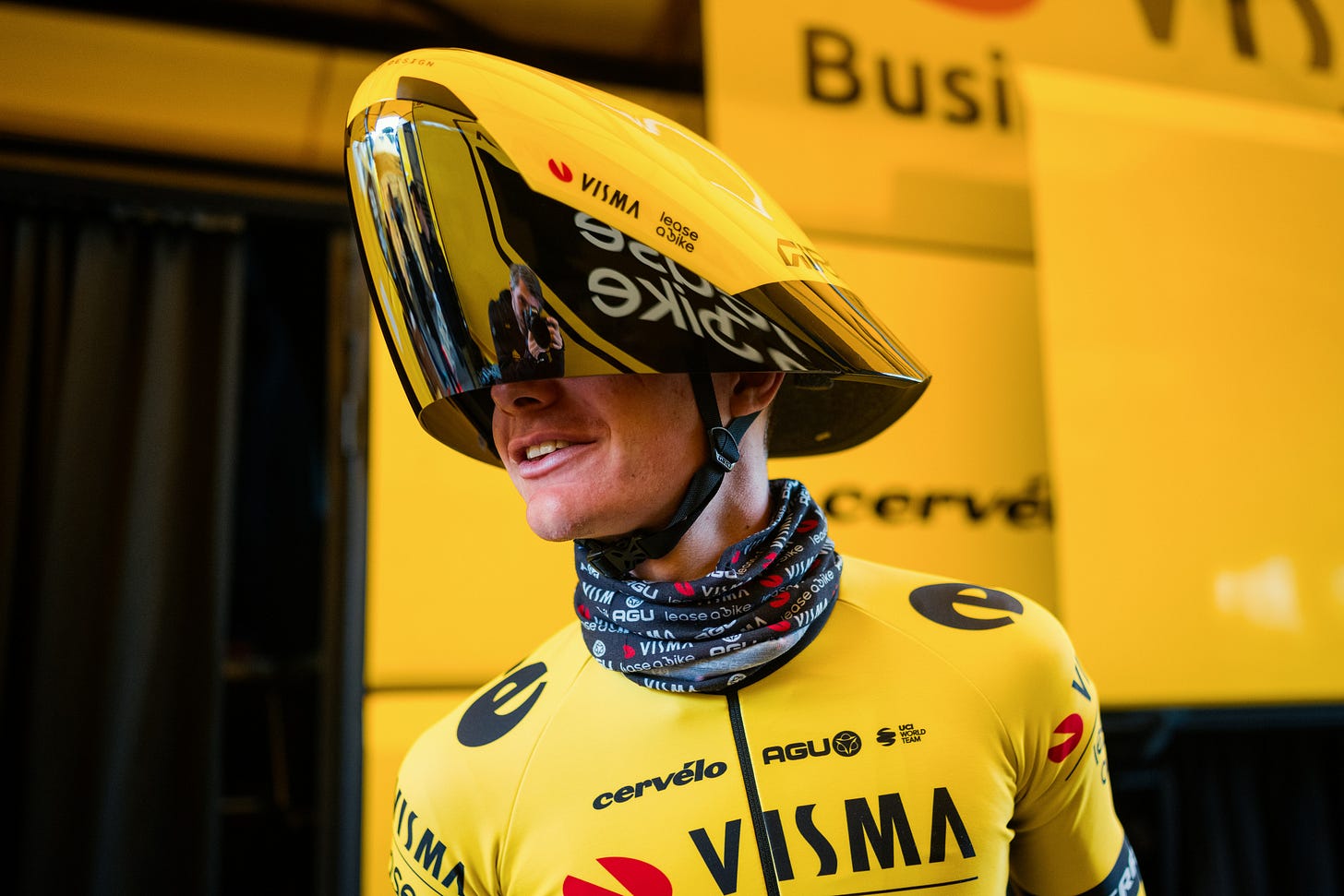
The charge for creating this helmet is seemingly clear: make the fastest bike helmet possible, no matter the cost (both financially and emotionally). This perception is reflected in a surprisingly detailed behind-the-scenes look at a selection of the design work for the helmet. It’s extremely cool to see some of the initial concept artwork and wind tunnel testing that went on for this wild-looking end product, and on some level, this type of helmet can be justified from a speed and efficiency perspective.
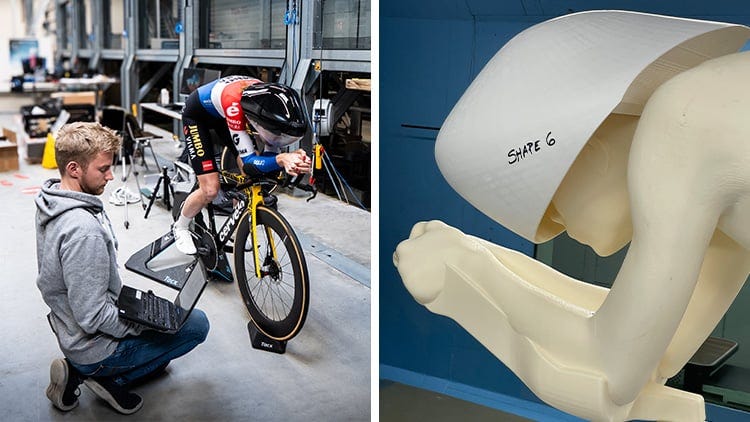
There is a ton of literature available online (e.g. 1, 2, 3) about the differences that a high-quality, well-fitting time trial helmet can make— often upwards of a 10+ watt decrease in required power from the cyclist when at race speed. This is generally accomplished by lengthening and tapering the front surface of the helmet in a way that redirects wind over the rider’s shoulders, and away from their torso and upper legs, where a significant amount of a cyclist’s drag is realized. The goal is minimize perpendicular surfaces and cavities formed by the body’s position that interact with oncoming wind, which is why most modern time trial positions also favor the inclined forearm position, as shown in the images above.
Even with all this justification though… I can’t help but feeling that science went too far here, and to cope with this unease, I went back to look at more egregious time trial helmets throughout history. If you gain nothing else from this article, please enjoy a trip down aerodynamics memory lane with some light commentary:
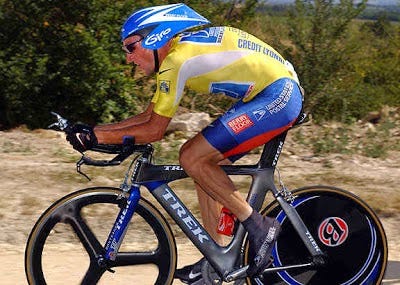
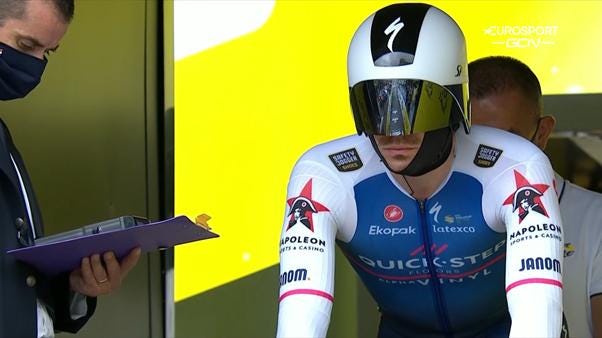
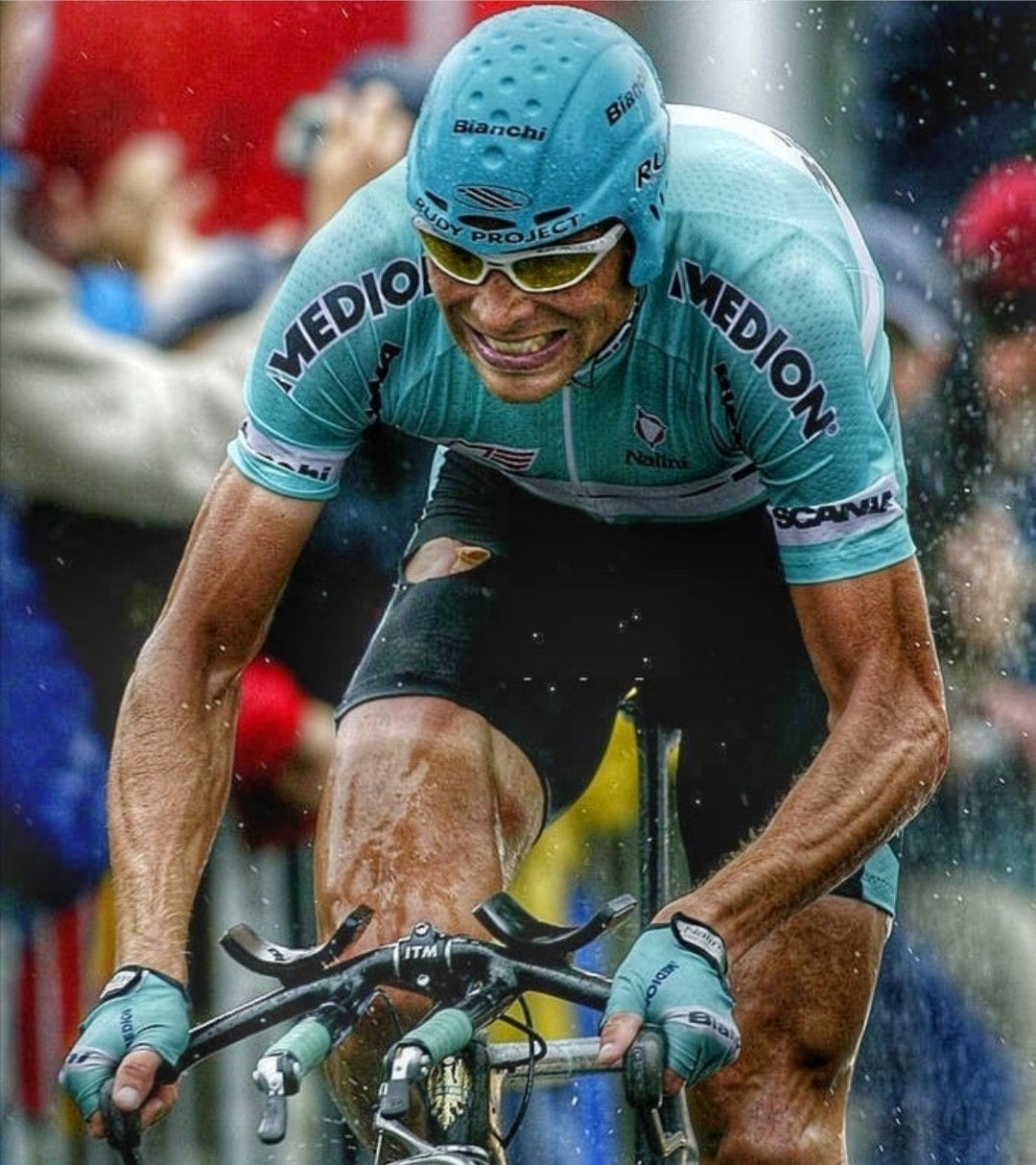
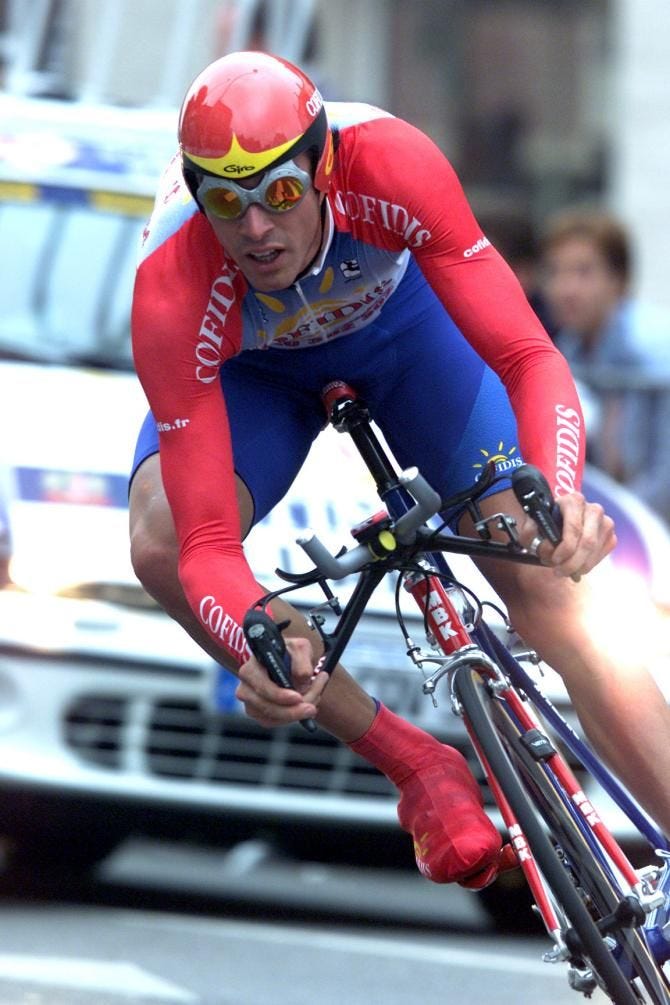
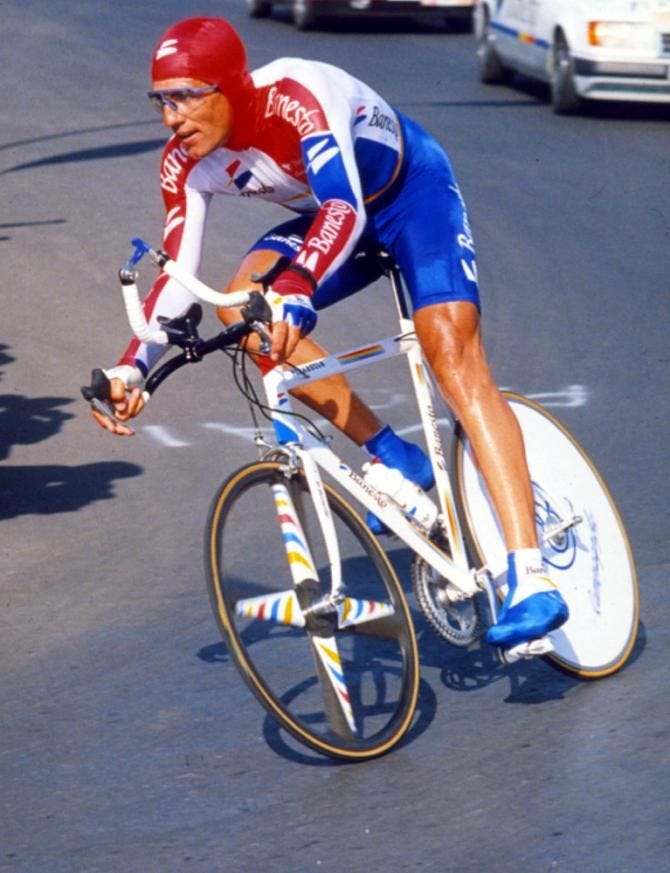

Apart from the pure enjoyment of seeing some of the most “unique” equipment designs in sports, this visual museum of time trial helmets also sparks a question: why doesn’t this type of flagrant optimization occur in most other sports? Not just for aerodynamics specifically, but also for heat management, agility, safety, and more? Are we about to enter an era of goofy-but-effective gear for all elite sports if the pursuit of marginal gains continues?
It’s definitely possible, but my gut says no— at least not broadly. Most sports have so many variables that the gear is trying to optimize simultaneously that it make it difficult to have designs like time trial helmets that are so optimized around a single parameter. Visma-LAB’s new time trial helmet is tailored exclusively for aerodynamic efficiency at the expense of heat management, weight, field of view, comfort, and (many would argue) safety. There are very few sports that really enable this type of optimization due to a variety of reasons, including the complexity of the athlete’s tasks, event duration, the sports’ level of funding, or even style considerations (i.e. viewership influence).
A handful of example equipment falling into these categories that immediately jump to mind are:
Football helmets. You don’t see football helmets that are highly specialized for the most consistent impact zones of players in specific positions— e.g. on the back of the head for quarterbacks. I think this is mainly due to the complexity of football, where players need great visibility, lightweight gear, and some level of impact protection from all sides. It’s also likely due to players’ style choice (if push back against the Guardian Caps is any indication).
Ultrarunning vests. Running vests serve a LOT of functions, which means their overall form is relatively generic. Modern running vests hold water and food, store trekking poles, need to be lightweight, keep stuff dry, and more. This big set of optimization variables culminates in a product that doesn’t look extreme in any way. For elite ultrarunners, the set of requirements does shrink because they traverse 50+ mile courses so quickly, and I do expect that we’ll get much more specialized products (even beyond a vest format) for ultrarunning packs in the future, like smaller vests containing ice packs and other cooling products.
Sliding riggers. The rowing motion stereotypically known for its grace and power on the water is surprisingly inefficient due to the rower sliding their bodyweight towards the stern of the boat on a mobile seat with each stroke. The sliding rigger removes the majority of this inefficiency by leaving the rower stationary and sliding their rigger back and forth— it was invented over 50 years ago and for a short period of time used at the elite level before it was banned by FISA (the international rowing governance body). Notably, their decision was explicitly based on the inequality that the cost of the sliding rigger could create in the sport, which is not something that seems to be common today.
Marathon kit. Modern marathon kit for elite runner is extremely interesting because for the speeds that runners achieve (>12 MPH), aerodynamic drag from loose clothing is likely non-negligible over a 2-hour effort, and yet, only women marathon runners tend to wear more skin-tight garments. If cycling is any indication, I would definitely expect men’s athletes to begin wearing tighter clothing over time, which may actually end up extending to more aerodynamic shoes and fabrics as well. To be honest, it’s difficult for me to figure out what category this falls into… which to means it might be likely to change soon!
It’s worth noting that I could easily be wrong about every example above, and maybe we will see QB’s with massive padded helmets and marathon runners in cycling-esque skin suits within a few years. Even if that doesn’t happen and only equipment that’s optimizing a single variable becomes more extreme, I think it’s easy guess that the overall cost of entry in most sports will increase. This has certainly happened in cycling, and may be part of why the overall sports equipment industry is consistently projected to achieve >6% annual growth for the next decade.
In any case, if I can rock this outfit as my aero kit on my group ride and as my cosplay at a gaming convention in 10 years, I’ll be happy:





